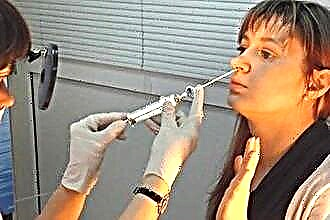Pericarditis is one of the most important cardiovascular diseases. Quite difficult to recognize, it has many forms and stages. Under the confluence of a number of circumstances, it can lead to the death of the patient, but in most cases it responds well to therapy. It occurs in patients of different sex and age, complicates existing diseases or is an independent condition. Pathology causes a wide variety of symptoms and requires careful differential diagnosis.
Etiology and pathogenesis of the disease
Pericarditis is an inflammation of the serous membrane of the heart. It can be an independent phenomenon or accompany another disease. At the end of the pathology, cysts and diverticula of the pericardium appear, which must be differentiated from those already present at birth.
Proven is the fact that pericarditis is very common. They are found in almost six percent of all autopsies.
Symptoms and treatment for pericarditis depend on the reasons why it has occurred.
Disease groups by origin:
- non-infectious;
- infectious;
- idiopathic.
Classification of reasons according to Gogin:
- bacterial, caused by microorganisms such as legionella, staphylococci, salmonella, streptococci, meningococci, pneumococci;
- tuberculous;
- rheumatic due to streptococcal infection;
- viral, including in combination with influenza, HIV, hepatitis, Coxsackie, mumps, rubella, chickenpox;
- chlamydial;
- mycotic;
- specific for a number of infectious diseases, for example: typhoid, cholera, brucellosis;
- non-infectious, caused by an allergy to drugs, as a response to conditions associated with a perverted immune response of the body, trauma, systemic diseases, hemodialysis, metabolic disorders, for example, uremia, oncology;
- idiopathic, with unknown etiology.
Classification options
Pericarditis is divided into acute, which are resolved within 6 weeks from the debut:
- Catarrhal - associated with the onset of inflammation of the mucous membranes;
- dry (fibrinous) - an inflammatory effusion appears, adhesions form between the layers of the pericardium, preventing the organ from working effectively;
- exudative (exudative) without or with cardiac tamponade. An accumulation of fluid forms in the structures of the organ, which changes its hemodynamics. Separation of the pericardial layers occurs. If there is blood in it, a hemorrhagic type of disease occurs.
Subacute pericarditis, the outcome of which occurs in the period from 6 weeks to six months:
exudative - there is an accumulation of fluid in the pericardium;
- adhesive - the membranes of the heart undergo an adhesive process;
- constrictive without or with cardiac tamponade - as a result, the ventricles do not change their size, and the atria increase. In some cases, the scar tissue deforms the entire pericardium; calcium deposits may be present, which pull the organ into the so-called "shell".
Pericarditis can take the form of chronic inflammation, lasting more than six months from the beginning. It is characterized by all the same stages as described above.
The main complaint of patients in the acute period is intense pain behind the sternum, radiating to the left shoulder blade, arm or neck. Suffering is somewhat reduced when taking NVPS or in a seated position of a person with an inclination forward, an increase is noted lying on his back. In some cases, the temperature rises, shortness of breath, palpitations occur, and blood pressure decreases.
Modern diagnostic methods
The diagnostic search for this disease begins with anamnesis, physical examination, auscultation, palpation, and percussion. Then instrumental methods come in. Decreases in the amplitude of the teeth appear on electrocardiography with acute pericarditis. You can see the elevation of the ST segment, the T wave is positive, the Q wave is absent. ST is directed in one direction. During the course of the disease, ST decreases to the level of the line, as well as T, electrical indicators are negative. T first deepened, then become positive. When a limited part of the pericardium is affected, ECG variations appear in only a few waves. The amplitude of all teeth decreases with a massive amount of fluid in the pericardial sac.
Shown carrying out and echocardiography. It helps determine:
- organ boundaries;
- the degree of pericardial enlargement;
- changing right structures;
- exudative volume;
- presence of effusion.
On an X-ray, attention is paid to the shadows of the heart. In some cases, MRI, CT are prescribed.
Evaluation of murmurs on auscultation is important. They can be different depending on the stage of the pathology:
- transitory;
- rude;
- scraping;
- three-component. The first is formed by heartbeat, the second by systole, the third by rapid relaxation in diastole.
When diagnosed, laboratory blood parameters also change. Noted:
- leukocytosis;
- pronounced ESR;
- the presence of C-reactive protein;
- an increase in troponin in viral and causeless pericarditis;
- the presence of a positive blood culture with infectious inflammation of the heart.
With inflammation of the cavity, urine tests for creatinine and urea are required. Their presence indicates the development of uremic acute pericarditis.
Differential diagnosis
Pericarditis is called a chameleon because of the variability in its symptoms, which is why it is often mistaken for other diseases. When diagnosing, attention is paid to the ECG data, the characteristic noise of friction, pain.
Differentiation of dry pericarditis should be carried out with the following conditions:
- heart attack with complaints of pain in the region of the heart, episthenocarditis pericarditis;
- changes in the lungs with coughing, shortness of breath;
- chest injuries with chest pain radiating to different parts of the body;
- thromboembolism;
- heart failure;
- SLE, rheumatic arthritis;
- with hypofunction of the thyroid gland;
- with infective endocarditis;
- with mononucleosis.
Diagnosis of an exudative nature requires differentiation from:
- DCMP;
- myocarditis;
- hydropericarditis.
Treatment tactics and further observation of the patient
The conditions for the treatment of pericarditis are physiological rest, diet, conscientious intake of pills. With a viral, idiopathic nature, the main goal is to minimize inflammation, relieve pain. For other reasons of formation, drug treatment of the pathogen and the condition preceding pericarditis.
Outpatient treatment protocol:
- NSAIDs;
- glucocorticoids;
- antithrombotic;
- diuretics.
Inpatient treatment is necessary in such cases:
- large-scale pericardial effusion;
- fever;
- immunosuppression;
- pericardial injury;
- low effectiveness of NSAIDs;
- myopericarditis.
Taking NSAIDs (often aspirin, less often ibuprofen) is indicated in high doses immediately after hospitalization and is used until the temperature has returned to normal. With effusion, beta-blockers and other means that change heart rate are not prescribed.
Surgical intervention is a method of treatment in cases of cardiac tamponade, purulent or neoplastic pericarditis, as well as in case of large effusion. The pericardium is drained, and a catheter is inserted into its structure.
The prognosis of the disease is generally positive if treatment is started on time. In the elderly, patients with chronic pathologies, the course, as a rule, takes on a protracted nature, shortening the life ahead. Without emergency medical care, cardiac tamponade threatens the death of the patient.
Patients with a history of pericarditis should be registered, they are shown periodic spa treatment.
Conclusions
As with any heart disease, prevention is very important in this case. You should not even be frivolous about routine operations such as tooth extraction or pathologies such as ARVI. Any of them can cause complications in the heart.
If suspicious symptoms appear, especially in the presence of chronic conditions, combined with an increase in temperature, you should seek medical help.



